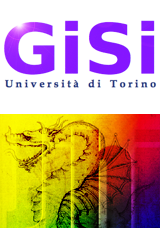JIHI 10(2021) n. 20
Editorial: Images and the JIHI
Enrico Pasini
 I have sometimes been inquired (by authors, staff, family) about how the images that accompany most pieces published in the JIHI are chosen and the role they have in our journal—the rhyme and reason of our choices, if there are any. The answer is in fact very simple. In the majority of cases I have been responsible for the iconographic line of the journal, following a small set of rules that we set down since the beginning:
I have sometimes been inquired (by authors, staff, family) about how the images that accompany most pieces published in the JIHI are chosen and the role they have in our journal—the rhyme and reason of our choices, if there are any. The answer is in fact very simple. In the majority of cases I have been responsible for the iconographic line of the journal, following a small set of rules that we set down since the beginning:
1. One item, one image. We have one image for each article, note, book reviews group, etc.: in sum, one pdf/html document, one image, with the exception of very brief texts, like a short editorial. The image is sampled by 3 to 6 (sometimes more) horizontal slices that are inserted inside the text column in a way that makes it easier to lay out the page.
2. Expectancy. The slices also hint to the nature of the image, but do not openly reveal it. So the image as a whole, with a bit of iconographic suspence, is presented only at the end of the piece, with a descriptive caption that contains the essential data for identification and attribution.
3. Open culture. We are an open-access journal, with a ‘free culture’ license (see: Understanding Free Cultural Works). We look for places where photographers and institutions share their images: Flickr (when images are published under a CC license), Unsplash, NASA, Wikimedia Commons, the Library of Congress, and a variety of museums sites, etc. are the sources of nearly the totality of our images. We favor sources where one can find both quality images, and unexpected contributions resulting from more or less common circumstances.
4. Contrast. Images in this journal are not illustrations, although sometimes we publish illustrations too. On the contrary our images are chosen, in most cases, based on a principle of contrastive association, and at times a paradoxical association will be preferred. Contrasting images work for us as an engine of wonder and perplexity: wonder for thoughts, and afterthoughts; perplexity for the necessary distantiation—be it Brechtian Verfremdung or simply humor—that the readers, editors, and even authors of a learned journal should be able to keep, up to a certain measure, in relation even to the best and most passionate treatment of their subject matter.
 I have sometimes been inquired (by authors, staff, family) about how the images that accompany most pieces published in the JIHI are chosen and the role they have in our journal—the rhyme and reason of our choices, if there are any. The answer is in fact very simple. In the majority of cases I have been responsible for the iconographic line of the journal, following a small set of rules that we set down since the beginning:
I have sometimes been inquired (by authors, staff, family) about how the images that accompany most pieces published in the JIHI are chosen and the role they have in our journal—the rhyme and reason of our choices, if there are any. The answer is in fact very simple. In the majority of cases I have been responsible for the iconographic line of the journal, following a small set of rules that we set down since the beginning: